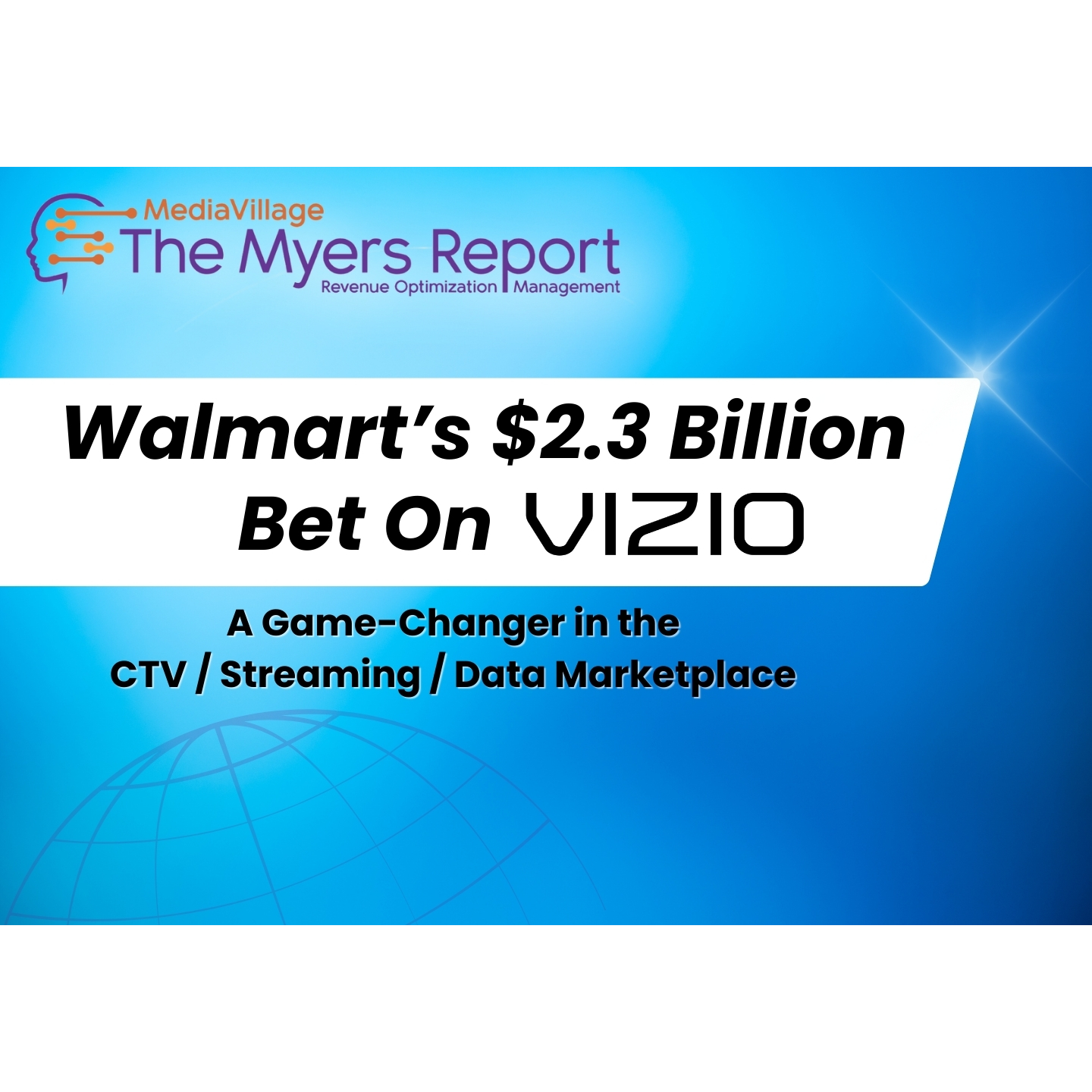Walmart's $2.3 Billion Bet on Vizio: A Game-Changer in the CTV/Streaming/Data Marketplace

Walmart's acquisition of Vizio for $2.3 billion underscores a strategic pivot towards enhancing its digital commerce and competitive edge against Amazon. This move, juxtaposed with Walmart's sale of Vudu to NBCUniversal's Fandango in 2020, reveals a focus on content distribution, data collection, and commerce without the financial burdens of original content production. While Amazon heavily invests in content creation, Walmart's strategy with Vizio leans towards leveraging advertising and first-party data collection to strengthen its market position in the smart TV industry and advertising community, challenging competitors across the digital and retail landscape.
Much has been written about Walmart's acquisition of Vizio, with the primary focus on ramping up Walmart's competitive positioning vs. Amazon and its growing digital commerce capabilities. What I've not seen in the commentaries and reporting on Walmart's acquisition is the connection to their decision to sell Vudu, the video streaming service, to NBCUniversal's Fandango in 2020. Vudu, which Walmart had acquired in 2010 for $100 million, offered a mix of free, ad-supported streaming content and a digital marketplace for buying and renting movies and TV shows. Why, it's worth asking, did Walmart sell Vudu and then four years later acquire Vizio? And what is the value of Vizio's relationships in the advertising community.
The likely answer to the first question is the more important one. More on the second question follows below. Walmart's strategy is centered on content distribution, data collection, and commerce. Vizio differentiates itself through a combination of affordability, user experience, and strong partnerships with content providers, without the drag of original content on its profitability. While Amazon is certainly Walmart's primary competitor, Amazon is investing billions in their content studio. In 2022, Amazon invested $16.6 billion in content, marking a 28% rise from $13 billion in 2021. Of this amount, approximately $7 billion was dedicated to Amazon Originals, live sports programming, and licensed third-party video contents. Most observers believe Amazon's content investments could continue to grow at a 20% annual rate for several years, especially as they enter into long-term sports rights.
For the question on Vizio's relationships in the ad community, according to The Myers Report, data from 150 Vizio advertising clients at agencies and brands suggests Vizio has not prioritized commerce offerings into their business. They've invested in building a sales organization and being a viable, yet average, competitor in a cluttered competitive set. While integrating Walmart's access to first party data from its customers merged with the first-party data collected from Vizio TV set owners is a powerful tool, Vizio's value on Madison Avenue is suspect.
Vizio's success in generating an advertising and data business model has positioned it as a competitor against the likes of LG Ads, Redbox, Samba TV, and Samsung Ads, along with content distributors Roku, DISH, DirecTV, and FubuTV. Other Vizio competitors include Hulu, Peacock, Pluto, Tubi, Philo, Rakuten TV, Comcast's Advertising unit, Spectrum Reach, and content/data aggregators Cadent, Simulmedia, Ampersand, and XACTV. The acquisition of Vizio will inevitably trigger further M&A activity.
According to The Myers Report data, Vizio's competitive strength is currency flexibility, and the company is perceived by the ad community as a viable, but not dominant competitor. Conversely, Walmart Connect, the company's advertising sales unit, is second only to Amazon Advertising, in the commerce category, in establishing business relationships at agencies and brands, slightly ahead of Kroger Precision 84.51. Growing competitors in the commerce/retail media category, each of which would benefit from deeper roots in the advertising business, include Target Roundel, Publicis' Citrus Ads, Walgreens, Albertson's, CVS, Retail Media + ( Home Depot), Lowe's and retargeting option Criteo.
The importance of advertising sales and the collection of first-party data to Vizio's revenues cannot be overstated. It's widely understood in the industry that data collection and targeted advertising play a crucial role in the business models of smart TV manufacturers. These practices enable companies like Vizio to offer competitive pricing on their hardware while generating additional revenue streams through advertising and partnerships.
For advertising, data, and media professionals looking to understand the dynamics between hardware providers like Vizio and content providers like Netflix and Amazon Prime Video, it's essential to recognize that while they operate within the same ecosystem, their business models and strategies for engaging viewers can be quite different. Vizio has established itself as a significant player in the smart TV market by focusing on integrating advanced technologies to enhance user experience and offering value to consumers.
Vizio entered the smart TV market in 2010 with the launch of its VIA (Vizio Internet Apps) platform, which provided users with access to a wide range of streaming content. Vizio's early recognition of the smart TV market's potential and its commitment to innovation and user experience have been key to its growth. By focusing on integrating advanced technologies and prioritizing user experience, Vizio has carved out a significant market share in the smart TV industry.
For professionals in advertising, data, and media, Vizio's story underscores the importance of innovation, strategic partnerships, and customer-focused product development in achieving sustainable growth and competitiveness in the rapidly evolving smart TV market.


